Wasabi ice cream
Wasabi, or Japanese horseradish, has a unique, pungent and mustard-like taste well-known to all sushi-lovers. But with vapours strong enough to wake up the sleeping or the unconscious (!), could wasabi really work in ice cream? Well, there is only one way to find out – read on!
Wasabi usually comes in the form of dried powder or paste. While I encourage all enthusiasts who wish to do so to grate their own wasabi stems or make their own paste, the following recipe only requires some (ready-made) Wasabi paste.
Unlike the oil-based Capsaicin-heat of chile peppers, the burning sensation of wasabi is short-lived. Fused into a sweet ice cream, the cold will temper the heat somewhat too. What is left, however, is still enough to add a pleasant sting of the wasabi.
Creating the setting: a sweet custard to host the wasabi flavour
Since the wasabi adds very little in terms of consistency, it is important that the ice cream base provides enough body in itself. Myself, I turned to one of my good ol’ vanilla base-recipes, minus the vanilla! Any good, more full-bodied base (like the egg-less Sicilian gelato) should work, however, so if you have your own personal favourite base, feel free to use it!
As mentioned, I chose a trusty vanilla custard recipe as my base (all the specific instructions for that one to be found via this link). While the recipe in the just linked post describes the “traditionalist” approach to making custard ice cream, I have taken the liberty of noting down the “modernist” approach down below = No special “tempering” of egg yolks, just all ingredients (except for the yoghurt and the wasabi) mixed together in the sauce pan right from the very beginning, then heated and brought to the so-called nappe stage in one go.
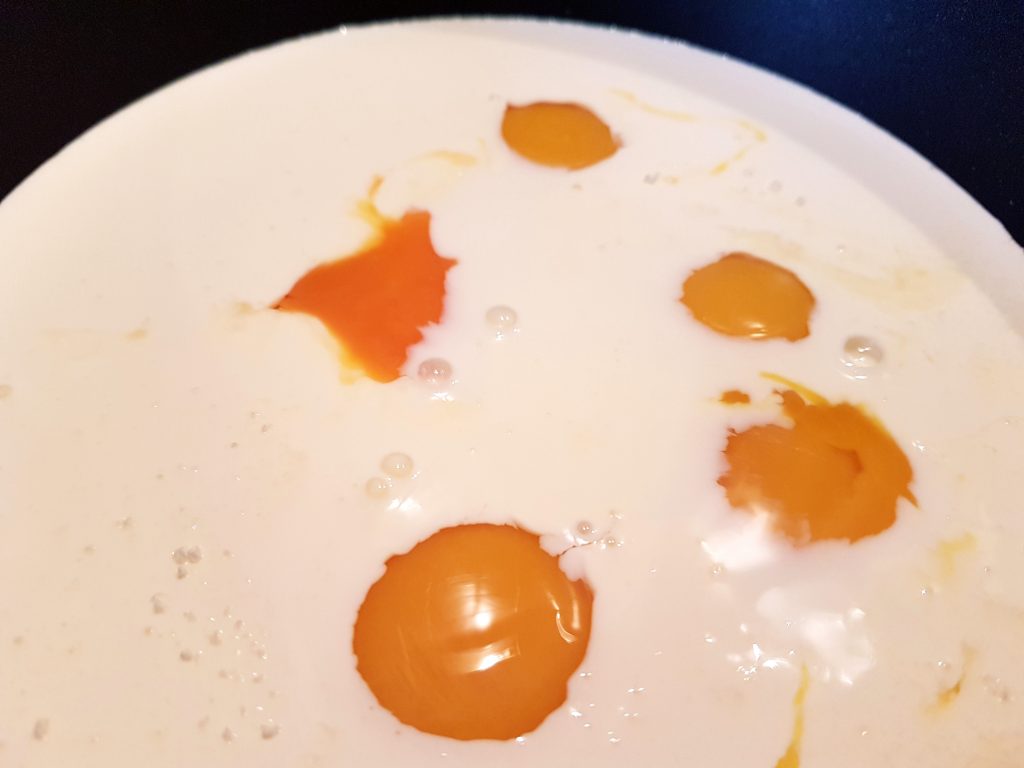
The modernist approach to making a custard ice cream – take (almost) all of the ingredients and go all-in from the very start!
Adding the wasabi …
Towards the end of the heating of the base, we will add the wasabi paste. Somewhat later still, when the base has cooled down a little, we will add the final ingredient: the small amount of yoghurt, which definitely should not be “cooked”.
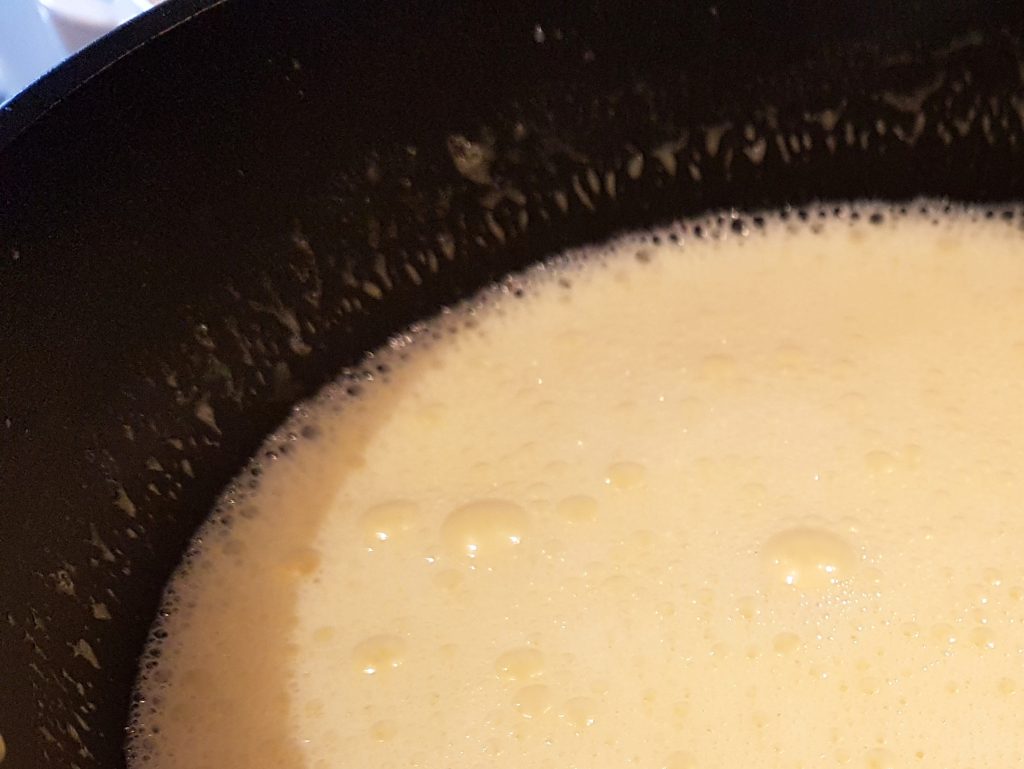
The custard base is just about ready now. Prepare to whisk in the wasabi and the yoghurt in a little while.
Whisk well and let the base chill for a couple of hours or more in the refrigerator before churning it in your ice cream machine (or – if you have none – still-freeze the ice cream, using only your freezer and some patience).
Wasabi ice cream – an exotic touch of sweet heat
Wasabi ice cream offers a tasty, fascinating and exotic combination of heat and sweet, and should please all adventurous ice cream lovers!
But exactly how adventurous do you have to be? In my view, anyone blessed with a little curiosity and an open mind should be able to enjoy this: The amount of wasabi I use is enough to still let you feel a certain sting, but it is well balanced by the sweetness and not painfully hot. Should you still feel worried, go with the lower amount suggested, or even lower: the wasabi flavour should still be there, still pleasantly embedded in the overall sweetness that makes the ice cream so very nice!
And to those of you who adore spiciness and might worry that this will be too lame for you – let me assure you that even small amounts of wasabi go a long way. And here, I speak from painful experience. When I made my first attempt on this ice cream, I threw caution to the wind and overdosed massively, nearly eradicating every single taste-bud in the whole family! So, unless you aim to use your ice cream as a weapon, heed my advice 😉
- 250 ml (1 cup) cream
- 200 ml (0.85 cup) milk
- 50 ml (about ¼ cup) yoghurt (preferably of Turkish or Greek dense type, about 10 % fat)
- 125 gram sugar
- 5 egg yolks
- 2 tablespoons skimmed milk powder
- about 1 good tablespoon (about 10-15 gram) wasabi paste
- Pour milk, cream, the egg yolks, the skimmed milk powder, and the sugar in a saucepan. Whisk well.
- Put on the heat and, while continuing to stir the base, carefully bring the mixture to the so-called nappe-stage = 82-84º Celsius (180-183 ºF). Use of a thermometer is recommended! Towards the end, whisk in the wasabi, making sure that it is well disbursed.
- Take off from the heat and let cool down as quickly as possible. Then, whisk in the yoghurt, making sure that the latter is well dispersed.
- Put in the refrigerator to chill a couple of hours or over the night.
- Churn the ice cream base in your ice cream maker. If you do not have any, still-freeze it using your freezer.
- Once finished, enjoy fresh or store in a freezer-safe container: cover with plastic film and a lid.
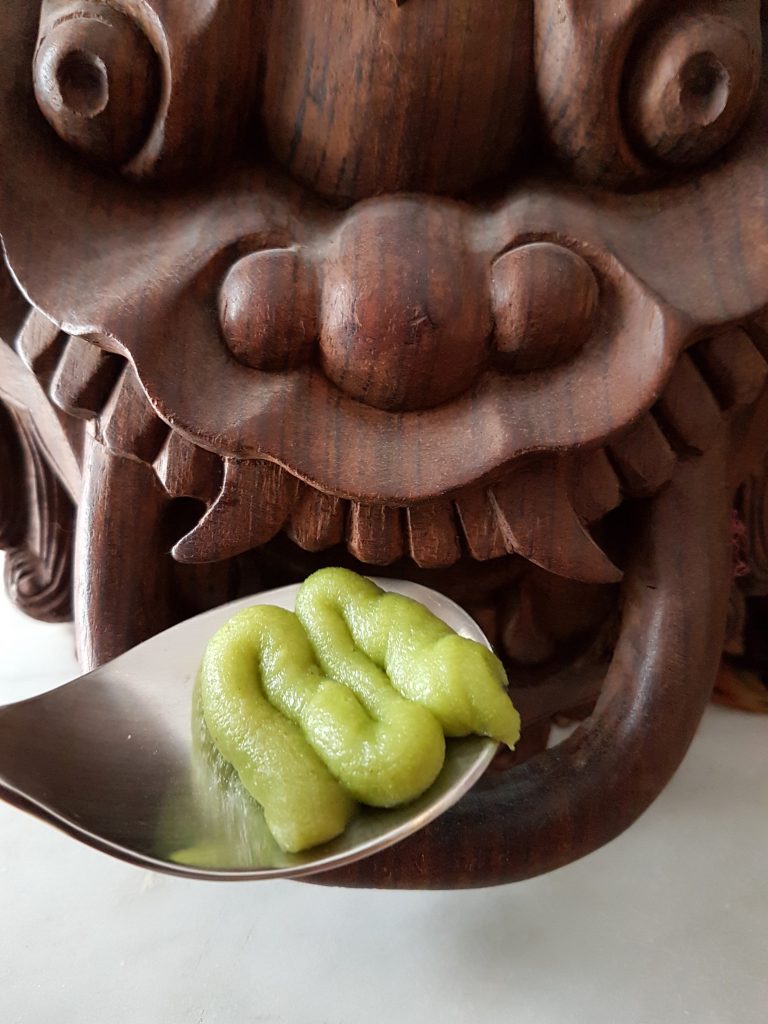
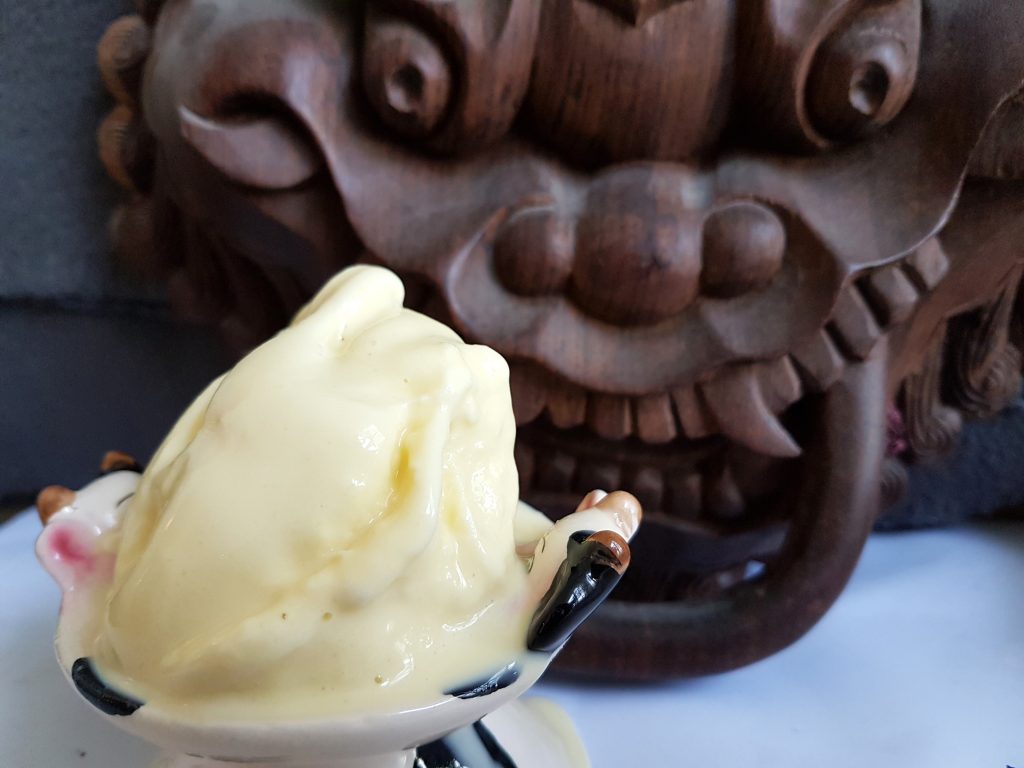
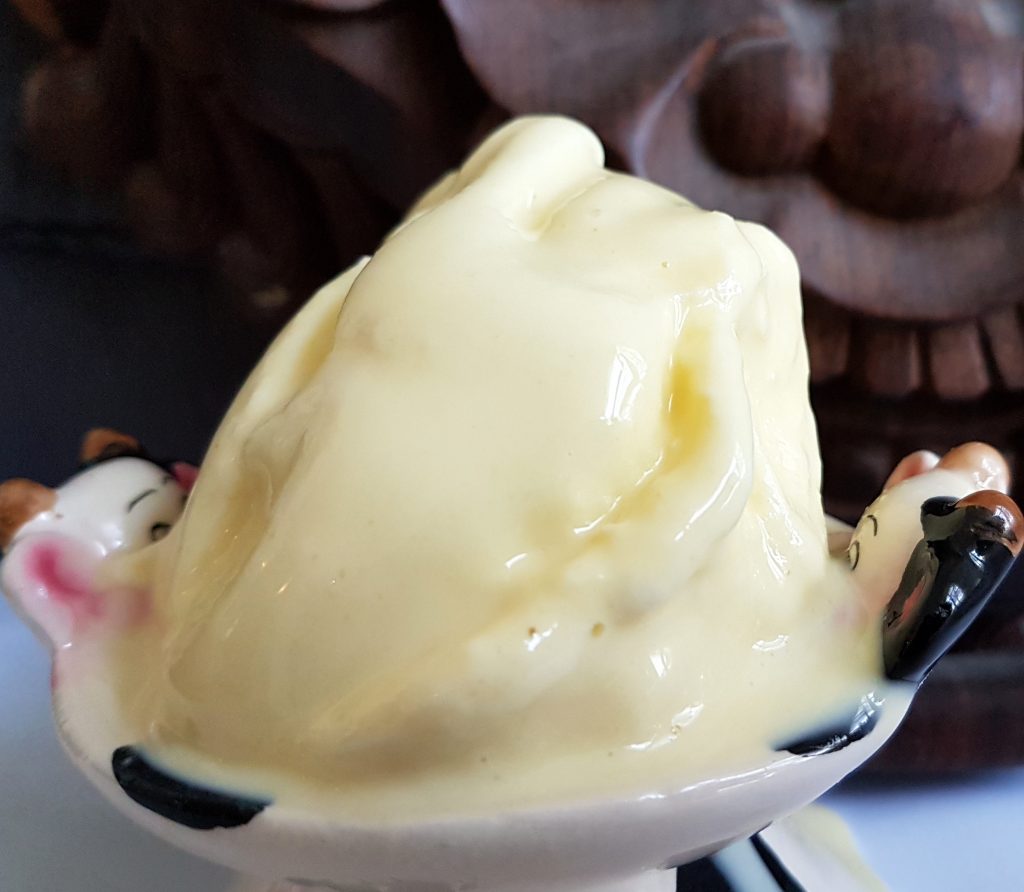
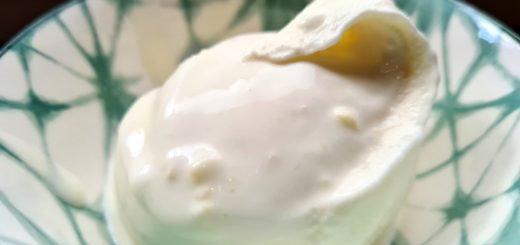
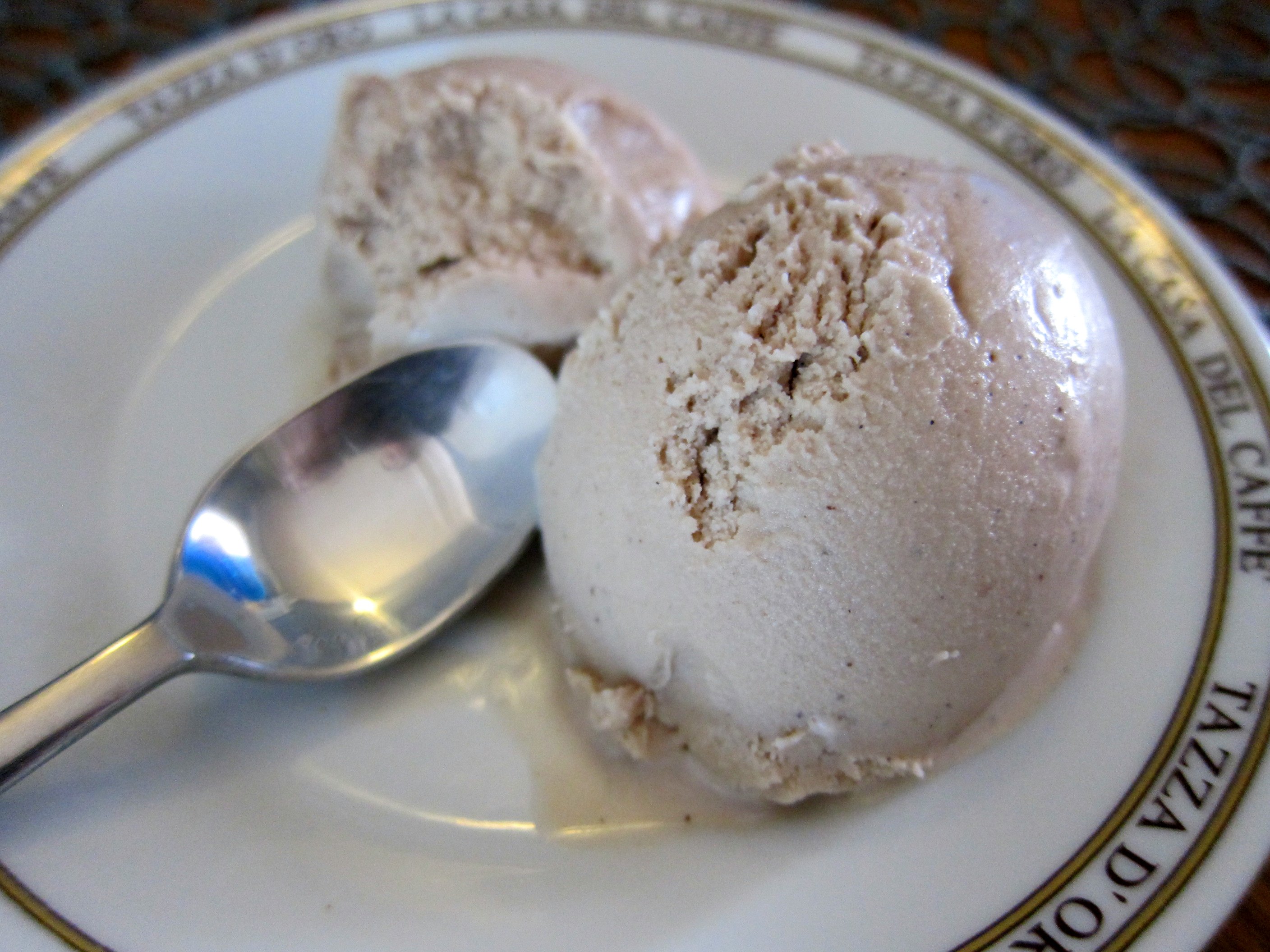
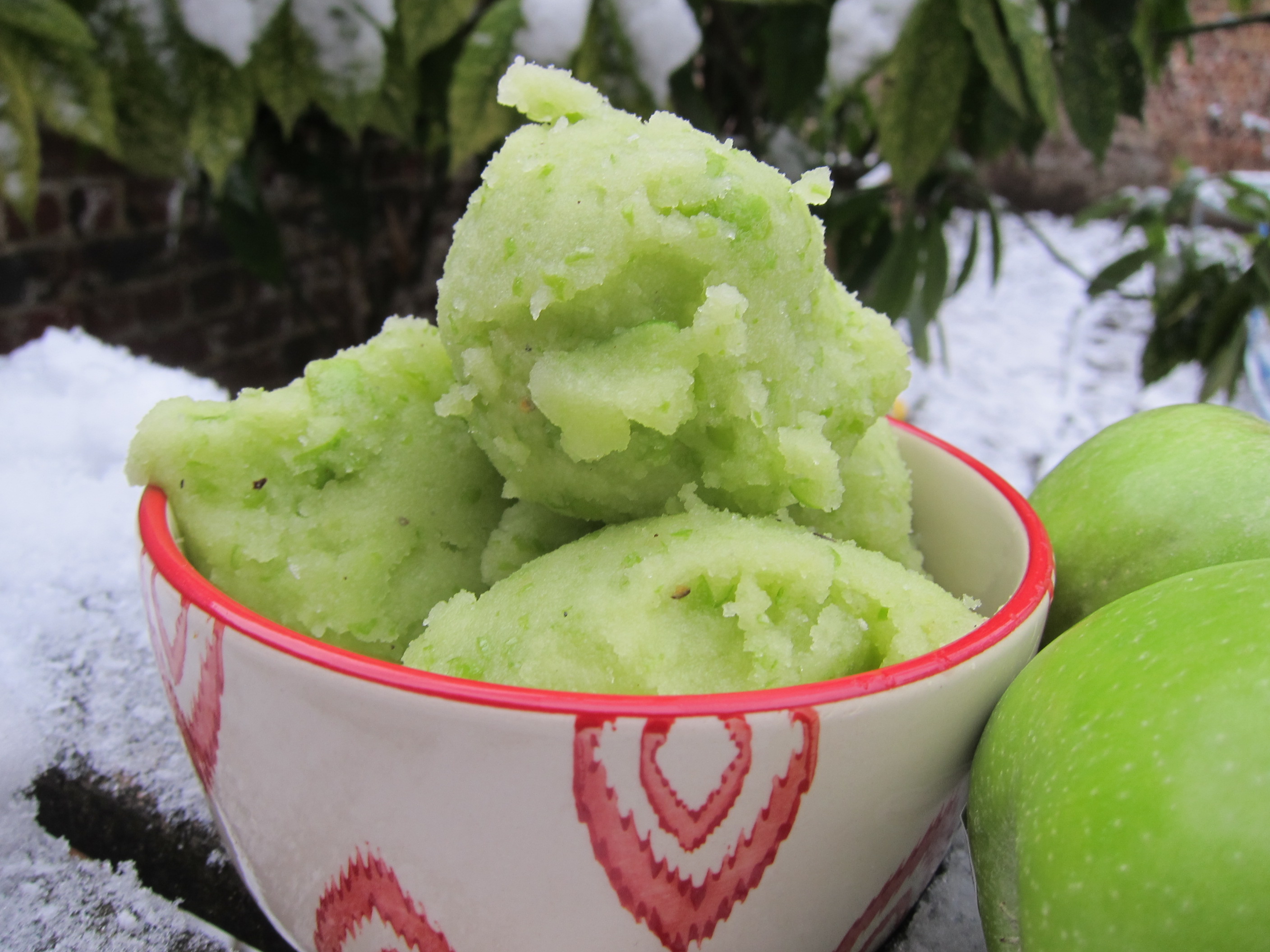


I am fairly new to your blog.The manner in which you bring the reader no only through the recipe but your thought process (and hits and misses) ins intriguing.
Had I a tub of wasabi ice-cream I believe I would get nothing done until I had finished it all.
Thank you -Johanne
Dear Johanne,
Thanks for your kind words! I’m glad that you find the blog intriguing, and yes – the wasabi ice cream is really something 😉
I will have a go at your recipe. I have been obsessing over this ever since I had it with a stek tartare in a restaurant. It elevated the dish so well. Thanks for sharing
Hi Lisa,
Thanks and best of luck – and I agree: wasabi can really add something extra when it comes to flavour combinations! 🙂